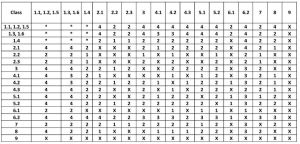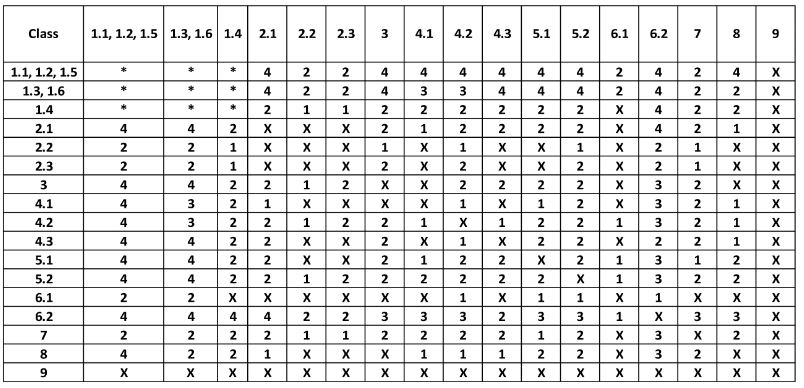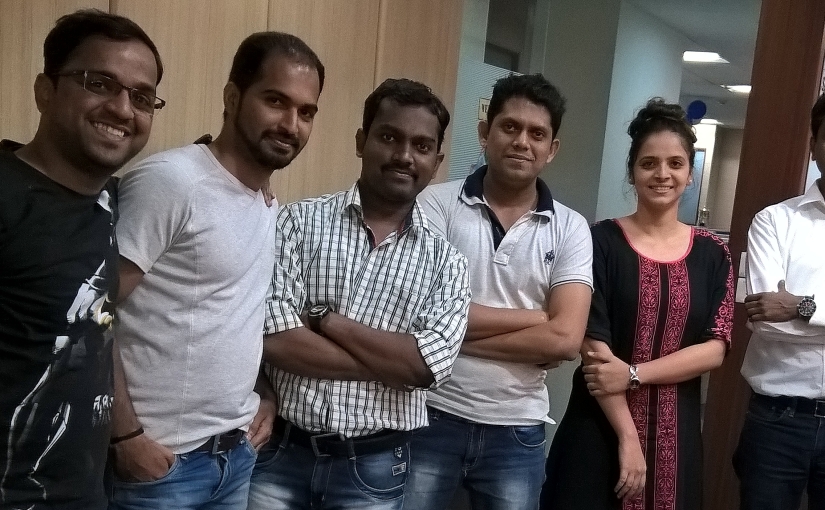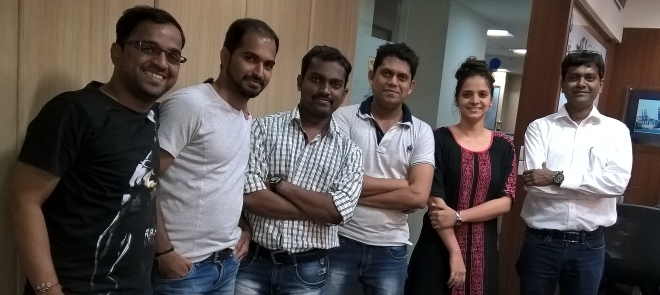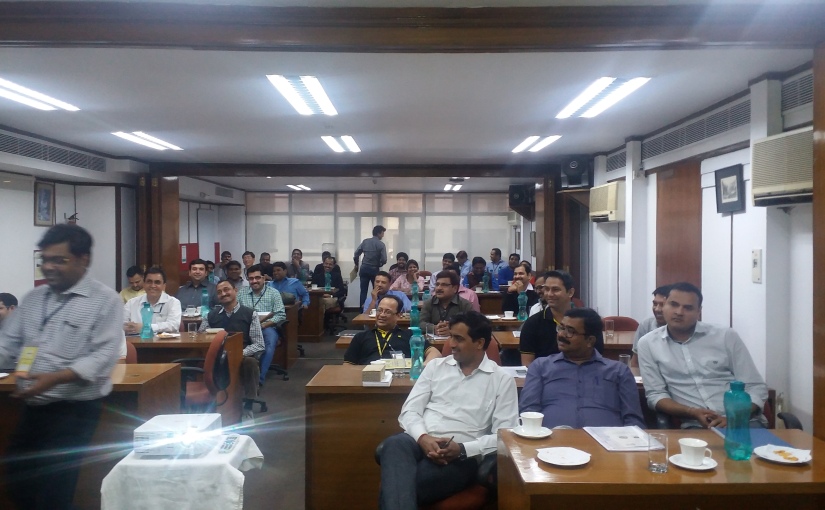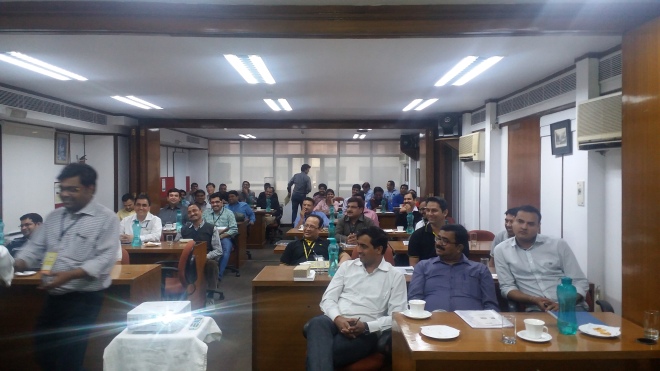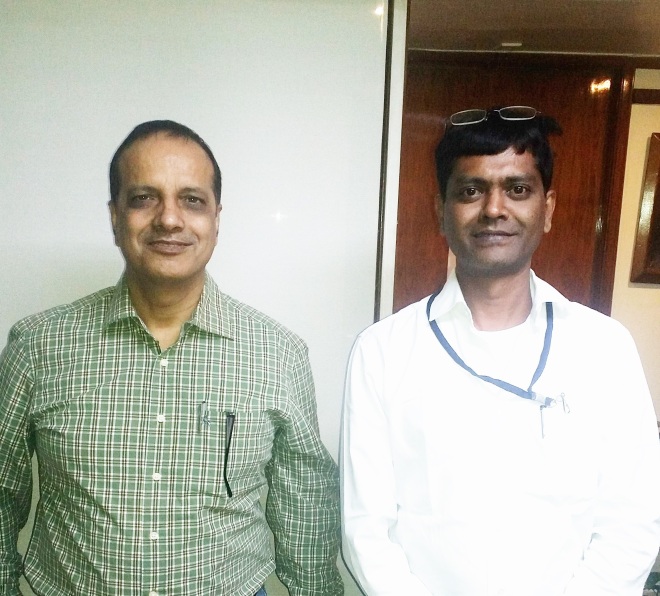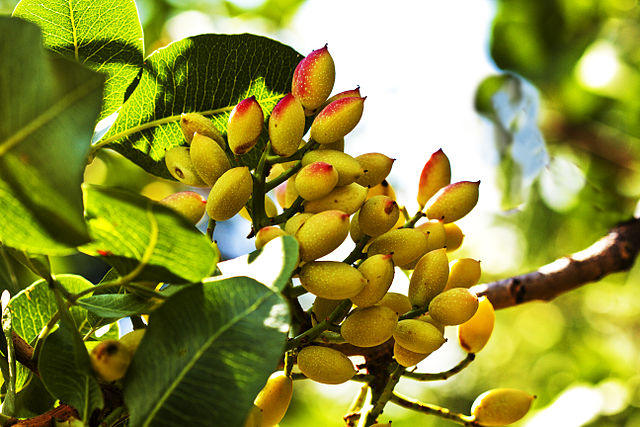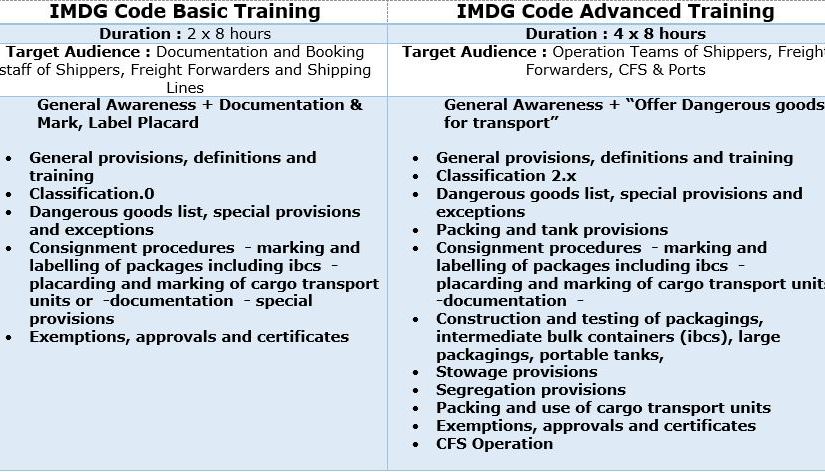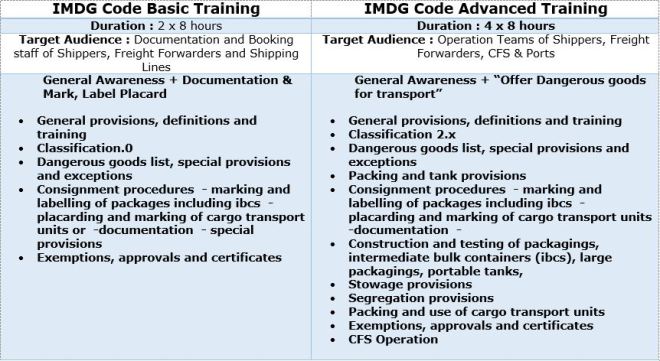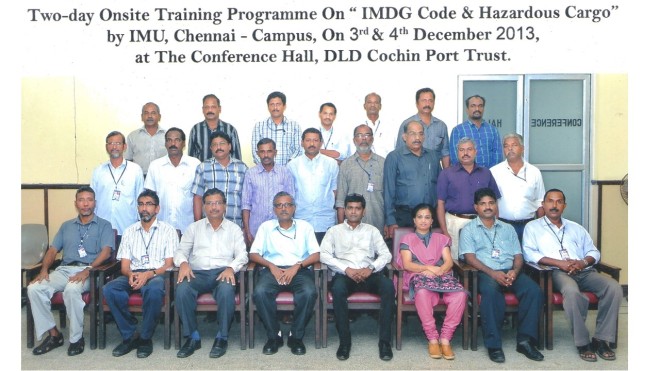There are various parties involved in different aspects of transporting dangerous goods in packaged form by sea. Each party have their one role(s) and responsibilities for compliance to IMDG Code ensuring safety at sea and protection of marine environment.
Below is the list of provisions which require exemption. Approval, authorization or involvement by competent authority. National competent authorities may use this list to delegate duties among their departments or bodies they have authorized to perform these duties.
Section No. Indicative description of Competent Authority’s role
1.1.1.8 Notifying infringements by an entity who is from the jurisdiction of another competent authority
1.3.1.1 Auditing an entity for verification of employee training
1.3.1.3 Verifying IMDG Code training records and setting period for record keeping
1.4.0.1 Applying additional security measures
1.4.2.3.4 Verifying security training records and setting period for record keeping
1.5.2.3 Inspecting effectiveness of Radiation Protection Programme
1.5.3.1 Quality assurance inspection for special form radioactive material, low dispersible radioactive material and packages
1.5.4.1 Special arrangements for transport of radioactive materials
2.0.5.3.1.1 Sent notification for transboundary movement of waste
2.0.5.3.3 Authorizing transport of solid waste in bulk cargo transport unit and road vehicles
2.1.3.2 Class 1 Explosives, classification
2.1.3.4.1 Exclusion from Class 1 Explosives
2.1.3.5.2 Assigning fireworks on basis of analogy
2.2.2.1.2 Flammability of gas –
2.2.2.3.1 Gas mixtures
2.4.2.3.2.4 Classification of self-reactive substances not listed in 2.4.2.3.2.3
2.5.3.2.5 Classification of organic peroxides not listed in 2.5.3.2.4
2.6.3.6.1 Live infected animals
2.7.2.3.3.2.3 acceptance threshold for special form radioactive material
2.7.2.3.3.8.2 Alternative volumetric leakage assessment -radioactive material
2.7.2.4.6.1 Classification as Type B(U), Type B(M) or Type C packages – radioactive material
2.9.2.2 Designating substances to be environmentally hazardous
2.9.2.2 Genetically modified live animals
2.9.4. Verification of tests data, calibration data etc. of Lithium Batteries
2.10.2.6 Excluding a substance mixture or article from Marine Pollutant requirements
3.1.2.6.2 Gases requiring stabilization during transport
3.3.1 – Special Provisions
16 – Authorization for transport of Samples of new or existing explosive substances or articles – UN 0190
76 – Authorizing Transport – various entries
127 – Authorizing inert materials other than listed by IMDG Code for phegmetizing properties – UN 2907
133 – Authorizing packaging other than listed in P409 and dispensation of EXPLOSIVE subsidiary risk label – UN 2956
178 – Authorizing explosives articles under N.O.S. Entries
181 – Dispensing EXPLOSIVE subsidiary risk label for Organic Peroxides and Self-reactive Substances
232 – Authorizing packaging other than tanks for UN 3257 3258
237 – Exempting nitrocellulose membrane filters
239 – Authorizing transport of Sodium batteries with liquid elemental sodium – UN 3292
250 – Authorizing transport of samples under The Convention on the Prohibition of the Development, Production, Stockpiling and Use of Chemical Weapons and on their Destruction – UN 3315
266 – Authorizing transport of explosives with less phlegmatizer than specified
271 – Classifying nitroglycerin under Class 4.1
272 – Classifying nitroglycerin under Class 4.1
278 – Classifying Nitroglycerin Mixture, Desensitized, Liquid, Flammable under PG I and packaging for same
283 – Acceptance of quality-assurance standard for manufacturing Articles Pressurized Pneumatic – UN 3164
288 – Classification of NITROGLYCERIN MIXTURE, DESENSITIZED, LIQUID – UN 3357
301 – Authorizing transport of Dangerous Goods in Machinery or Apparatus with more than LQ volume – UN 3363
309 – Approval or Ammonium Nitrate Emulsion, Suspension or Gel – UN 3375
311 – Approval of DESENSITIZED EXPLOSIVE, LIQUID, N.O.S. – UN 3379
356 – Approval of metal hydride storage system – UN 3468
363 – Approval of containment system and more than 1500L fuel for Dangerous Goods in Machinery or Apparatus – UN 1202 1203 1223 1268 1863 3475
364 – Approval of test for transport in Limited Quantities – UN 0012 0014
376 – Defective Lithium Batteries
925 – Approving laboratory for testing charcoal – UN 1361 1362
926 – Authorizing personnel for issuing certificate of moisture content in copra – UN 1363
928 – Exempting fishmeal from the provisions of IMDG Code – UN 1374 2216
929 – Permitting transport of Seed Cake (a) under Seed Cake (b) – UN 1386
952 – Authorizing bulk container for UN 1942
959 – Authorizing transport of waste aerosols on long international voyages – UN 1950
961 – Approving certain Lithium Batteries in vehicles – UN 3166
962 – Approving certain Lithium Batteries in vehicles – UN 3166
964 – Authorizing laboratory for testing Potassium Nitrate
4.1.1.15 Extending period of plastics drums and jerricans, rigid plastics IBCs and composite IBCs with plastics inner receptacles.
4.1.2.2.2.2 Authorizing transport of IBC beyond last inspection date
4.1.3.6.2 Design type approval for pressure receptacles
4.1.3.6.6 Approving alternate method for periodic inspection of pressure receptacles
4.1.3.6.9 Marking of pressure receptacles not meeting the criteria of chapter 6.2
4.1.3.7 Authorizing packaging, IBCs and Large packaging not listed in the packing instructions
4.1.3.8.1 Authorizing transport of unpackaged articles other than Class 1
4.1.4 List of packing instructions
P099 Approving packaging for specific goods
P101 Approving packaging for specific goods
P200(1) Pressure relief device
P200(2) Frequency of periodic inspection for pressure receptacles which make use of composite materials
P200(4.k) Minimum wall thickness for pressure drums
P200v increasing interval of periodic inspection for steel cylinders
P201 Approval of cylinders – UN 3167, 3168, 3169
P405 Authorizing transport of dry phosphorus in projectiles or hard-cased articles – UN 1381
P620 Alternative packagings for the transport of animal material
P902 Requirement of pressure receptacles UN 3268
P905 Cylinders – UN 2990, 3072
P907 Filling density of cylinders
IBC099 Approving IBC for specific goods
IBC520 Approving IBC for organic peroxides and self-reactive formulations not listed in IBC520
LP99 Approving Large Packaging for specific goods
LP902 Requirement of pressure receptacles UN 3268
4.1.5.15 Large and robust explosives articles
4.1.5.18 Approval of packaging
4.1.6.1.14 Requirements for pressure receptacles
4.1.7.2.2 Authorizing organic peroxides and self-reactive substances of type F in IBC
4.2.1.9.1 Compatibility of dangerous goods and portable tank
4.2.1.9.4.1 Increasing or Decreasing the maximum mean bulk temperature for degree of filling in tanks
4.2.1.13.3 Authorizing self-reactive substances and organic peroxides with an SADT less than 55°C in portable tanks
4.2.1.16.2 Degree of filling for class 7 substances in portable tanks
4.2.3.6.4 Allowing higher initial degree of filling for refrigerated liquefied gases
4.2.3.7.1 Procedure for calculating actual holding time – refrigerated liquefied gases
4.2.5.1.1 Authorizing portable tanks for dangerous goods not authorized in portable tanks
T23 Assigning control and emergency temperature for organic peroxides & self-reactive substances in tanks
TP4 Degree of filling for substances in class 7
TP9 Authorizing transport of certain dangerous goods in tanks
TP10 Approving lining for tanks with material other than lead
TP16 Approval of pressure device on tank
TP23 Setting special condition for transport in tank
TP24 Approval of device to prevent the build-up of excess pressure due to the slow decom position of the substance transported in tank
4.3.1.3 Authorizing bulk containers for substances not authorized by IMDG Code
4.3.2.4.2.4 Authorizing single infected articles without plastic bag
4.1.1.15 Extending usage of plastics single packaging beyond 5 years
4.1.2.2.2 Approving transport of IBC beyond 6 months from last periodic test/inspection
4.1.3.6.2 Design type of pressure receptacle
4.1.3.6.6 Alternative method for inspection of pressure receptacle
4.1.3.6.9 Marking of pressure receptacle not meeting part 6.2
4.1.3.7 Authorizing packaging, IBCs and Large Packaging not specifically authorized by IMDG Code
4.1.3.8.1 Authorizing transport of unpackaged articles other than explosives
5.1.5.1.2 Shipment approvals for Radioactive materials
5.1.5.1.3 Shipment approval by special arrangement for Radioactive materials
5.1.5.2 Certificate issuance for Radioactive materials
5.2.2.1.9 Dispensing explosive subsidiary risk label for type B self-reactive substances
5.2.2.1.10.1 Dispensing explosive subsidiary risk label for type B organic peroxides
5.4.1.5.9.1 Assigning entries EXPLOSIVE, N.O.S.
5.4.1.5.9.2 Authorizing explosives with lesser water of phlegmatizer
5.4.1.5.15 Issuance of fireworks classification reference
5.4.2.1.4 Authorizing drums on roll
5.5.2.5.4 Determining period between fumigant application and loading of the fumigated cargo transport unit on board the ship
6.1.5.1.1 Procedure for design type of packaging
6.1.5.1.3 Intervals for testing packaging on production samples
6.1.5.1.5 Selective Testing of packaging
6.2.1.1.2 Approving pressure receptacles without UN certification marking
6.2.1.1.9 Pressure receptacle for acetylene
6.2.1.3.6.5.4 Capacity of pressure relief devices
6.2.1.4.2 Quality assurance systems for pressure receptacles
6.2.1.5.1.7 Replacing hydraulic pressure test by gas
6.2.2.1.1 Extending the usage of composite cylinders beyond 15 years
6.2.2.4 Gas cylinders – Welded carbon-steel gas cylinders – Periodic inspection and testing
6.2.2.5 Conformity assessment system and approval for manufacture of pressure receptacles
6.2.2.5.4.11 Communicate with other competent authorities about design type approval, modifications of approvals, and withdrawn approvals
6.2.2.6 Approval system for periodic inspection and testing of pressure receptacles
6.2.2.6.2.4 Approving Periodic inspection and testing body
6.2.2.6.3.2 Auditing periodic inspection and testing body and its quality system
6.2.2.6.4.3 Examine the documentation and verify the inspections on pressure receptacles
6.2.2.6.4.5 Provide details for denial of approval
6.2.2.6.4.6 Modifications to periodic inspection and testing body approvals
6.2.2.6.4.7 Communicate to any other competent authority, information concerning initial approvals, modifications of approvals, and withdrawn approvals
6.2.2.7.8 Authorizing engraving of inspection dates on acetylene cylinders
6.2.3.1 Authorizing non-UN pressure receptacles
6.2.3.5 Salvage pressure receptacles
6.2.3.5.4 Marking of salvage pressure receptacles
6.2.4.2.2 Alternative methods for testing Aerosol dispensers
6.2.4.3 Exempting water bath testing for Aerosol dispensers
6.3 Test provisions for packagings
6.4.6.4 Packages designed to contain 0.1 kg or more of uranium hexafluoride
6.4.9 Provisions for Type B(M) packages
6.4.9.2 operational controls for venting of Type B(M) packages
6.5 Various Provisions related to the construction and testing of intermediate bulk containers (IBCs)
6.6 Various Provisions related to the construction and testing of large packagings
6.7 Various provisions related to the design, construction, inspection and testing of portable tanks and multiple-element gas containers (MEGCs)
6.8 Road tank vehicles
6.9 Design, construction, inspection and testing of bulk containers
7.3.2.3 Requirement of offshore containers
7.3.3.4 Authorizing drums on roll
7.3.4.1 Approving packing of goods which require segregation away from each other in same container
7.3.7.8 Relaxing temperature control
7.6.2.1.2 Authorizing drums on roll
7.6.2.1.5 Authorizing over stowing of portable tanks
7.7.1.2 Approval of Shipborne barges
7.7.3.5 Approving packing of goods which require segregation away from each other in same barge
7.8.4.1 Special provisions for incidents involving radioactive material
7.9.1.1 Exemptions from the provisions of IMDG Code
7.9.2.1 Approvals as required by IMDG Code
